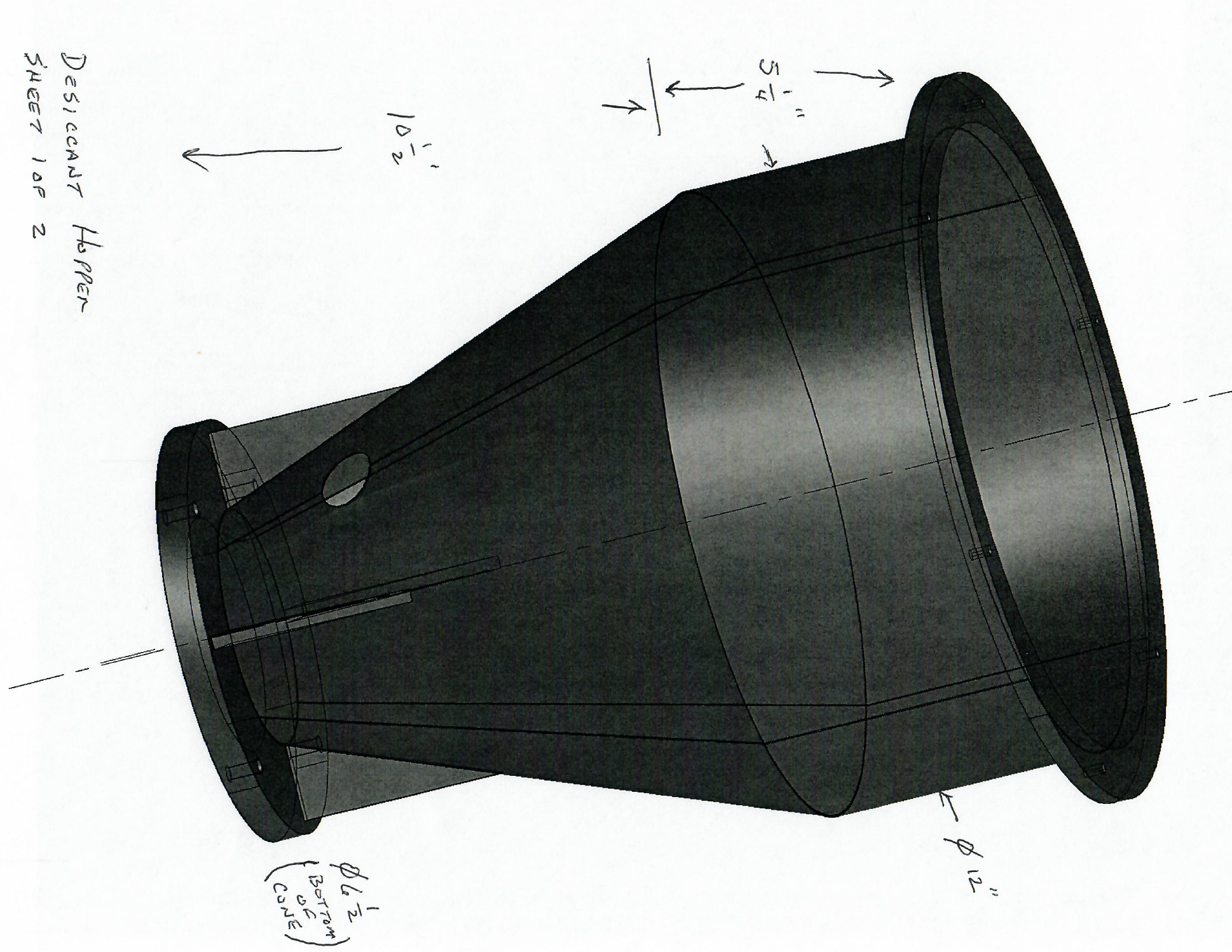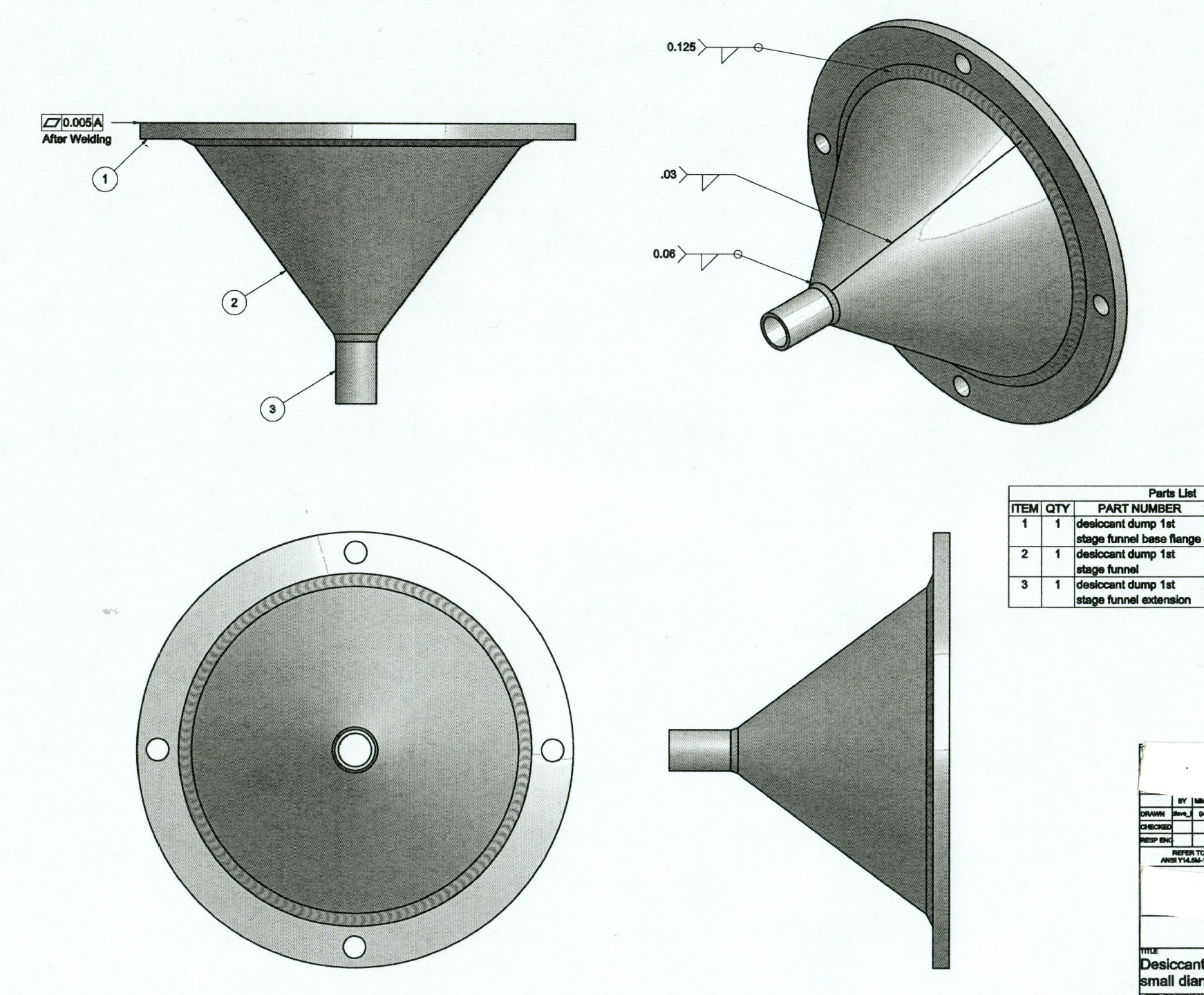By Terry Griner
Follow him on LinkedIn
Some may call it antiquated, but frankly it is real manufacturing
Many shops don't have rolling equipment because it is expensive and takes unique training to do it properly. If your customers aren’t purchasing 100 tanks or funnels at a time, it doesn’t make sense to have the type of fabrication machinery needed to reduce the cost from repeated orders. Automation of this type of process Is expensive and is not readily available (off the shelf).
The process of rolling circles, cylinders and curves is not cutting edge. Some may call it antiquated, but frankly it is manufacturing. With many engineers exploring automation, efficiency techniques and reducing labor costs; they often don’t get behind the veil to know how projects are really done by contract manufacturers.
But why rolling instead of other processes?
Rolling metal can create a more accurate tolerance in the diameters than step braking -- as close as 1/16” diameter tolerance on the inside or outside diameter versus step braking with a press brake.
Rolling is faster than step braking on a brake press and makes truer cylinders or cones. You can see brake presses' inability to create the curvatures in the video.
Only one seam is created during forming a complete diameter as opposed to multiple seams or curved members needed during the step braking process.
The use of the rolls, the machine used to form the curved detail, can also form a cone or a cone shaped segment. This shape is very useful in directing the material loaded into the vessel to a specific location. The cone shape can more easily control the volume, or the flow rate of the product being used.
Rollers are adjustable. The 60” long rolls allows for up to 1/4" thickness mild steel and thinner gages of plate or sheet metal to be rolled. The smallest set of rolls has 1" diameter rolls for up to 16 gage mild steel blanks and 18" wide. We have a variety of rolling equipment, with variable radius curves or full circle diameters:
Large: 7” diameter rolls to form up to 1/4" thick, mild steel blanks and 60" wide.
Medium: 3" diameter rolls to form up to 10 gage mild steel blanks and 36" wide.
Small: 1 3/4” diameter rolls capable of forming 14 gage mild steel blanks and 36" wide.
How
To get the “arced” features, the sheet metal or plate is put through a set of rollers to “form” the metal in a curved fashion.
When the metal enters the specially set up triangularly placement of the three rollers (or more, depending on the form required), the metal “curves” the plate or sheet metal to a radius shape. This process can be controlled for the various radius sizes required.
The rolled details can be formed into a partial arc or can be rolled into a complete “ring,” “diameter” or "cylinder."
To make the completed diameter, the ends of the curved member is welded together. On extremely large diameter cylinders, the radius blanks can be welded together.
APPLICATION
Example 1: round cylinders or cones

When handling liquids or solids that flow (sand, cereal grains, pebbles or pellets, etc.), a round cylinder or cone shape is ideal for allowing the material to flow to the required next operation.
In order to manufacture those types of shapes and containers, the sides are “curved,” not box-shaped. A box shaped container has corners that the media inside can get caught or "cake" together.
The two shapes (cylinder and cone) were rolled to print specifications and welded together to complete the needed part configuration. The gussets and the end flanges were welded on after the two circular shapes were married together.
The medium diameter set of rolls was used to fabricate the two shapes, cyIinders and cones. Without the knowledge of the rolling process, the ends of the two shapes may not match up, making the welding of the ends more problematic. A "twist" of the blank is needed to match up the ends of the cylinder, stressing the material at the area of the needed deforming. Incorrect roll-forming processes increase the costs and can cause this unfavorable stress of the material.
Example 2: gas tanks
This tank was used for gas, because it had to be round. It could not have sharp edges. When you have a box-shape, the unequal pressures of gases in the vessel could build up, causing a dangerous situation.
The steel "blanks" were sheared to length and width.
The cylinder was formed in the large set of rolls
In order to get the correct diameter, the metal was fed through the rolls three or four times to get the required diameter and to make sure there were no "flats" on the ends of the cylinders.
The tank ends, the mounting feet, and the various tank flanges were welded on after the cylinder was created.
Incorrect rolling of these blanks would make it very difficult for the welder to match up the ends of the cylinder. The finished cylinder would not be visually appealing to the customer and may cause all of the completed operations to be reworked or re-formed. At worse, the gas tank could be scrapped by the customer. This is not a good outcome for anyone.
Example 3: Small cylinder, not rolled

This funnel is a great example of rolling, using the step brake method. The customer uses the funnel on the equipment they use to fill moisture absorbing packets (desiccants) and adds the packets to the packages containing the electronic products they are shipping to their customers. They fill various sized bags with desiccants and seal bags with heat or glue. The paper or fibrous packet is porous and allows any moisture Incurred during shipping, to be absorbed by the packet.
We could not use any of the sets of rolls for this funnel because the diameter was too small on the narrow end of the funnel to fit the diameter of the rolls. This was step broken using the brake press. The step brake operation and the brake press tooling allows the blanks to be curved instead of sharp (the tooling in the brake press would do this).
The brake press person did 15 gentle "brakes" or "forms" on each of the metal pieces (slight brakes at approximately three to five degrees of bend on each "hit").
Three curved sections were needed to make the funnel.
The three pieces were welded together, and the weld lines were ground smooth.
The skilled brake press operator would reduce scallops from happening using a hand grinding operation.























